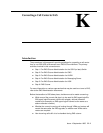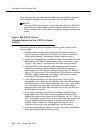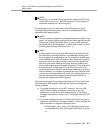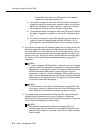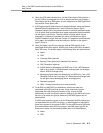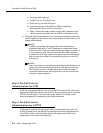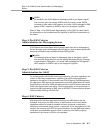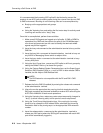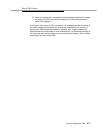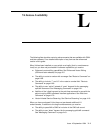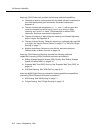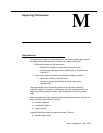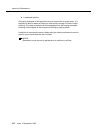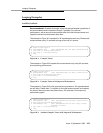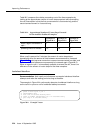
Converting a Call Center to EAS
K-8 Issue 4 September 1995
It is recommended that incoming ACD call traffic be blocked to prevent the
queuing of new ACD calls to existing splits during the cutover from the non-EAS
to EAS environment. Blocking of new incoming calls can be accomplished by:
■ Busying out the appropriate trunk groups
and/or
■ Using the Vectoring form and setting the first vector step for actively used
incoming call vectors to the ‘‘busy’’ step.
Once this is accomplished, perform these activities:
1. Make sure all EAS agents are logged out of all splits. If CMS or BCMS is
operational, the CMS real-time reports for splits or the G3-MA/Manager 1
mon bcms split
command can be used to identify the terminals where
agents may still be logged in.
2. Issue the
busy mis
command at the administration terminal to busy-out the
CMS link.
3. Issue the
busy link n
command at the administration terminal to busy-out
any AUDIX or Messaging Server switch-to-adjunct links.
4. Issue the
busy station x
command at the administration terminal to busy-
out any AAS ports.
5. Using the Hunt Group form, convert any ACD splits to skill hunt groups by
setting the Skilled? field to y for these hunt groups.
6. Using the Feature-Related System Parameters form, set the Expert Agent
Selection (EAS) Enabled? field to y, and if a R3V2 or later release CMS is
installed, set the Adjunct CMS Release field.
NOTE:
The EAS feature is not compatible with the R2 and R3V1 CMS
releases.
7. Release the link to CMS (if installed) by entering the
release mis
command
at the administration terminal.
8. Inform the on-site agents that they can log into their terminals using the
EAS login procedure and become available to receive ACD calls using the
AUTO-IN or MANUAL-IN work-mode operations.
9. Using the Vectoring form, restore any vector steps temporarily changed to
‘‘busy’’ (to block incoming calls) to their previous vector step format.
10. Using the Trunk Group Administration form, if the routing for incoming
trunks is to be changed to EAS-related VDNs, administer the Incoming
Destination field for any trunk groups to the appropriate VDN extension
number.
11. Issue the
release station x
command at the administration terminal to
release any AAS ports (where the EAS loginID associated with each AAS
port will be automatically logged in).




